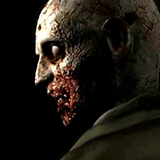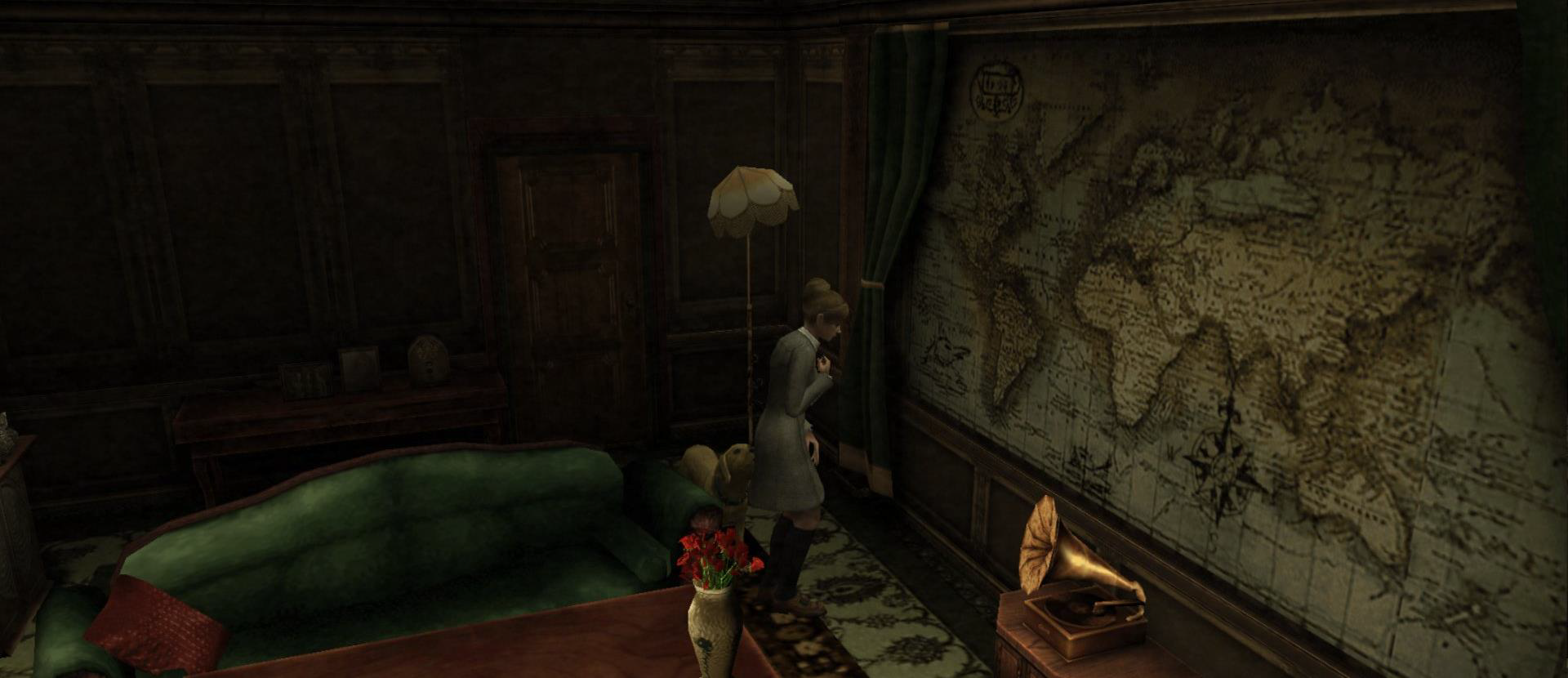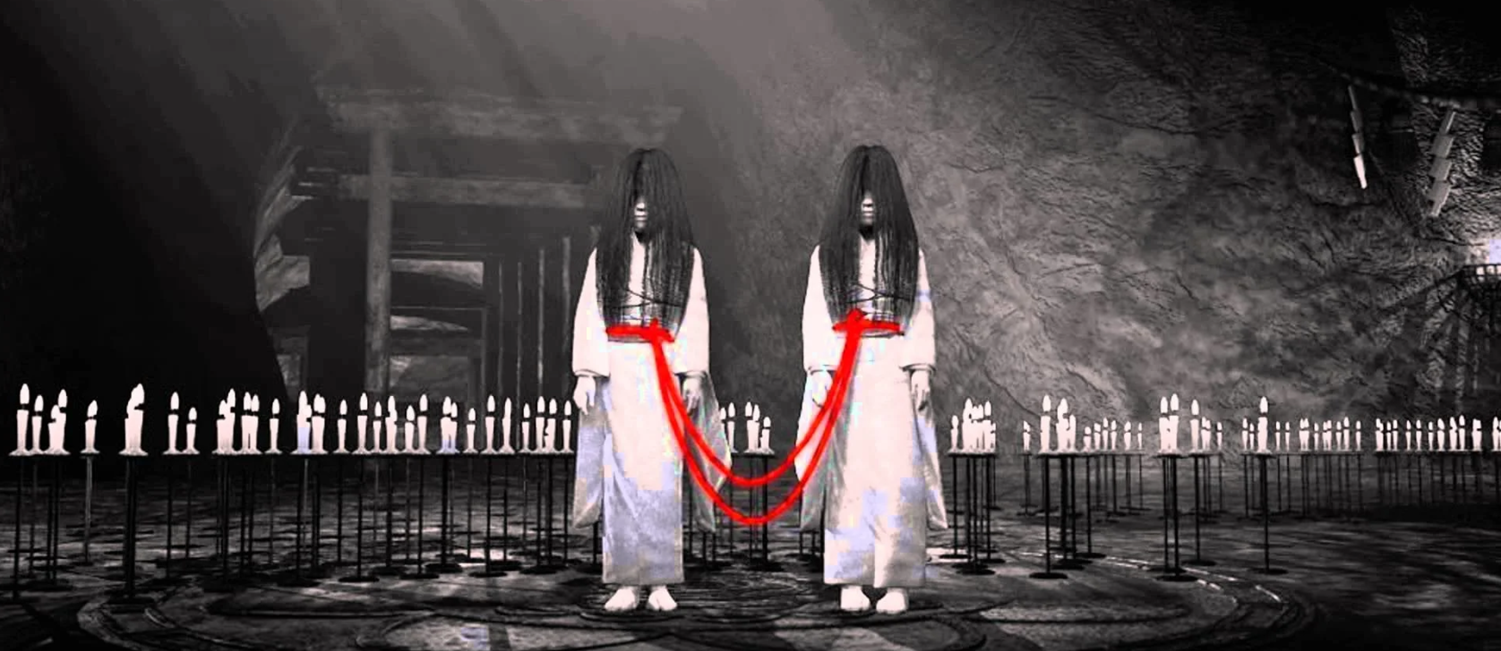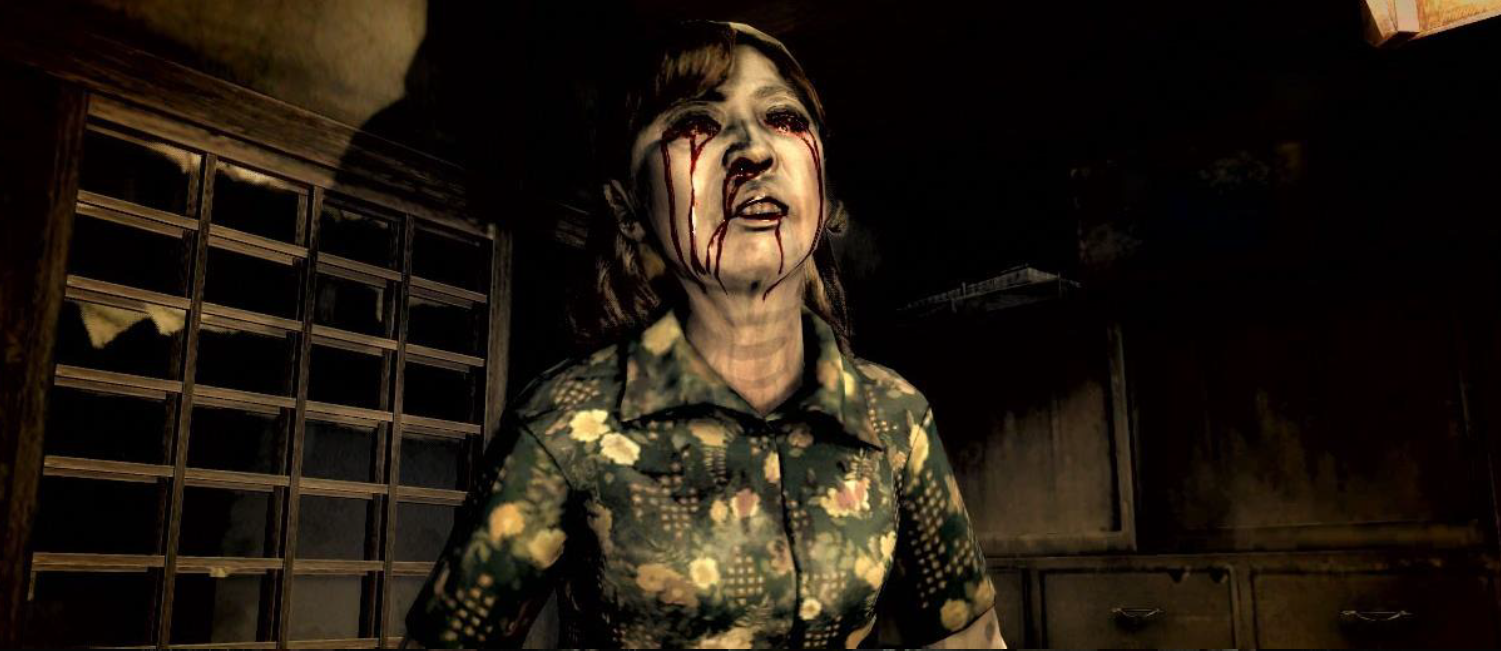BRIEF APPROACH TO THE DESIGN OF SURVIVAL HORROR MECHANICS
Resident Evil as a case study
June 6, 2019 | Approx. 15 min read

Resident Evil (Capcom, 2002)
What is Survival Horror?
The term survival horror can broadly be understood as a video game genre characterized by placing the player in a fictional context designed to instill fear, where careful management of limited resources is an essential dynamic for overcoming the challenges presented throughout the game.
Defining the exact origins of the genre is a complex task, although there are notable precedents dating back to the 1980s, such as the Japanese game Sweet Home (1989), which introduced primitive mechanics resembling those of classic survival horror, or Haunted House (1982), one of the first video games to incorporate a horror setting.
But survival horror games, as we know them today, did not begin to take shape until the arrival of titles like Alone in the Dark (1992) and Resident Evil (1996), which provided a solid foundation that fueled an intense period of growth, led by works such as Project Zero (2001), Forbidden Siren (2003), Silent Hill (1999), and Clock Tower II: The Struggle Within (1998).
Unfortunately, the genre reached its maturity stage too soon, with Resident Evil 4 (2005) marking a turning point. This particular title, developed by Capcom, explored the integration of shooter mechanics into the classic survival horror formula, resulting in an experience more focused on fast-paced, visceral action rather than resource management or a slower-paced gameplay approach.
Despite criticism from more purist players, the game's positive reception led other survival horror franchises to follow suit, gradually distancing themselves from the genre and marking a decline that could be considered premature.
This shift caused the general public to lose interest in the genre in the early 21st century, as many of its defining technical characteristics—such as the use of fixed camera angles in the Resident Evil franchise—ceased to be appealing.
However, since 2008, survival horror has been experiencing a resurgence. Dead Space (2008) successfully captivated audiences again, and later titles like Amnesia: The Dark Descent (2010), Outlast (2013), and Alien: Isolation (2014) further increased player interest by offering what some experts have begun to classify as extreme survival horror—a subgenre where players lack any means to defend themselves from the physical threats they face.
On the other hand, the nostalgic preferences of modern players have encouraged some video game companies to bring back the classic survival horror experience, incorporating technical innovations adapted to contemporary standards. This is the case with titles such as The Evil Within (2014), Resident Evil 7 (2017), and Resident Evil 2 (2019).
Finally, it is worth emphasizing that the essence of survival horror, in its purest form, continues to exist as a niche within the indie market, where developers strive to replicate the traditional experience from different perspectives. Some take a literal approach, as seen in Back in 1995 (2019), while others focus solely on capturing the essence, like Yuppie Psycho (2019).

Resident Evil (Capcom, 1996)
Case Study: Resident Evil (1996 – 2019)
As this article aims to provide an analysis and reflection on game mechanics design within the survival horror genre, it is essential to first select a model that serves as a basis for an in-depth study. The Resident Evil franchise has been chosen not only for its pioneering role in the genre but also for its ability to reinvent itself on multiple occasions over the past decades.
As previously mentioned, survival horror is characterized by featuring a terrifying setting (hence the “horror” in the term) and requiring careful resource management, whether it be ammunition, medical kits, or other elements (which explains the “survival” aspect). However, Resident Evil (1996) introduced a third element often associated with the genre—the resolution of specific puzzles as a means of progressing through the story via exploration.
The Resident Evil franchise has employed different approaches to fulfill these three characteristics throughout its history, so the titles will be analyzed separately, grouped together based on their gameplay similarities. For instance, since Resident Evil, Resident Evil 2, and Resident Evil 3: Nemesis share many mechanics, they will be examined as a single unit.
In Resident Evil games, the player usually takes on the role of a protagonist who must survive a zombie apocalypse.

Resident Evil 3: Nemesis (Capcom, 1999)
RE (1996), RE2 (1998), and RE3: Nemesis (1999)
This first trilogy, which could also include titles like Resident Evil Zero (2002) and Resident Evil: Code Veronica (2000)—which, despite being developed later, use almost identical mechanics as their foundation—most faithfully embodies the characteristics of classic survival horror. From the first to the last, the developers sought to incorporate an atmosphere and narrative inspired by gothic horror, using mansions, museums repurposed as police stations, and abandoned buildings as primary settings.
In other words, the aesthetics, according to the MDA model (Mechanics, Dynamics, and Aesthetics), serve a specific and deliberate purpose—to evoke fear in the player. This is achieved through graphical props, visual and sound effects that, thanks to the inherent mental models of the audience, reinforce the intended atmosphere using subtle and instinctive language.
It is particularly important to understand that players experience a game starting with aesthetics and ending with mechanics—not the other way around, which is how developers design the experience. For this reason, prioritizing the aesthetics of a game that aims to belong to the survival horror genre is crucial, as it is the only way to ensure the player feels unease and fear from the very beginning.
Regarding the mechanics found in this trilogy, they can be divided into three main groups to facilitate understanding and analysis. These groups will be referred to as Movement Mechanics, Combat Mechanics, and Operational Mechanics.
- Movement Mechanics: This group encompasses mechanics designed to modify the player's position within the world, allowing them to explore their surroundings and progress through the story.
- Walking: Allows the avatar to move through the environment. It is important to note that controls in the early Resident Evil games are often perceived as clunky, as movement is based on the avatar's perspective rather than the camera's perspective (which is more common in modern video games).
- Running: Allows the avatar to run through the environment.
- Turning: Enables the avatar to rotate in place, changing their movement direction.
- Climbing/Descending: The player can interact with certain elements (stairs, shelves, etc.) to climb onto them and reach specific objectives.
- Combat Mechanics: This group includes mechanics that allow the player to fight, halt, or defeat enemies in the game world.
- Aiming: When aiming a firearm at enemies, the player is unable to move and remains completely still. To regain mobility, they must stop aiming.
- Shooting: Shots can only be fired when the player is aiming. Each shot consumes one bullet from the equipped weapon.
- Reloading: When the equipped firearm runs out of bullets, and only if additional ammunition is available in the inventory, it can be reloaded. However, reloading is a relatively slow process and cannot be canceled.
- Knife: The knife is an alternative melee weapon. It does not consume ammunition, so the player can use it as many times as desired.
- Operational Mechanics: This broad category encompasses all mechanics that involve operations beyond simple interaction with the environment.
- Inventory: The player always has access to an inventory where they can store all collected items (weapons, ammunition, health sprays, keys, etc.). The inventory has limited space, so only a small number of items can be carried at a time. When the inventory is activated, the game is also paused.
- Saving: To save progress, the player must have ink ribbons and use one of the typewriters found throughout the game. Ink ribbons are a limited resource and must be in the inventory to be used.
- Combining: Certain items can be combined if they are present in the inventory, such as key objects needed to solve puzzles, health herbs (red, green, and blue) that create medkits with different effects, etc.
- Examining: This mechanic provides information about the currently selected item. Such information can be crucial for solving certain puzzles.
- Storage Chest: To facilitate resource management, the game provides storage chests. Players can deposit items they do not wish to carry at the moment. Stored items can be retrieved from any chest, as all chests share a unified inventory system.
- Inventory: The player always has access to an inventory where they can store all collected items (weapons, ammunition, health sprays, keys, etc.). The inventory has limited space, so only a small number of items can be carried at a time. When the inventory is activated, the game is also paused.
Movement Mechanics

These mechanics let players explore by walking, running and climbing stairs to progress in the game.
Combat Mechanics
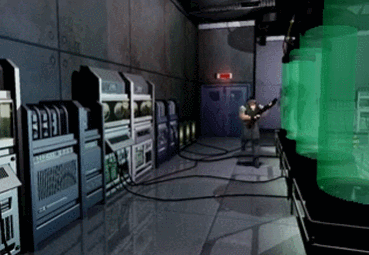
These mechanics let players fight enemies by aiming, shooting, reloading firearms, and using a knife for unlimited melee attacks.
Inventory
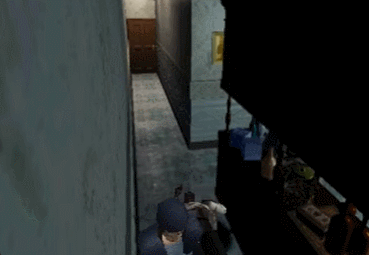
Players can manage inventory, save progress with ink ribbons, combine items, and examine objects for crucial information.
Storage Chest

Storage chest lets players store unused items and retrieve them from any chest, thanks to a shared inventory system.
As observed, most of these mechanics are designed to facilitate resource management, which becomes more apparent when considering the existence of an internal economic system. In other words, if the player wants to defeat a zombie, they will need to shoot it; but to shoot, they must first aim (which prevents movement while aiming). If they fire, they lose a bullet from their inventory (which is particularly significant given the scarcity of ammunition). By firing bullets, the player depletes their ammo, but if they defeat the enemy, they also reduce the threat, allowing them to explore the area without danger.
On the other hand, the scarcity of ammunition inherent in the survival horror genre allows for one of its most commonly used dynamics—running and evading enemies, taking advantage of their slow movement. However, this also involves a small risk/reward transaction, as ignoring the threat increases danger compared to neutralizing it, although, in return, the player preserves their bullets.
Regarding the element of the knife, it serves as a gameplay aid when the player runs out of bullets, preventing them from being completely defenseless. However, the gameplay remains balanced, as the knife does not deal significant damage, and since it does not effectively stop enemies, using it carries a high risk of taking damage. Interestingly, a strategic dynamic employed by veteran players involves first knocking enemies down with bullets and then taking advantage of their vulnerable state to finish them off with the knife. This, therefore, is the optimal strategy for resource management while simultaneously reducing threats within the game.
Lastly, it is important to highlight the element of ink ribbons, which are required to save the game. Indeed, Resident Evil was likely one of the first games to introduce this concept. Since the number of times the player can save is limited, the game forces them to carefully manage their saves. This seemingly simple feature extends beyond the game’s diegetic elements and directly impacts the player, as they must be extremely cautious not to waste ink ribbons to avoid the risk of becoming stuck in the game.
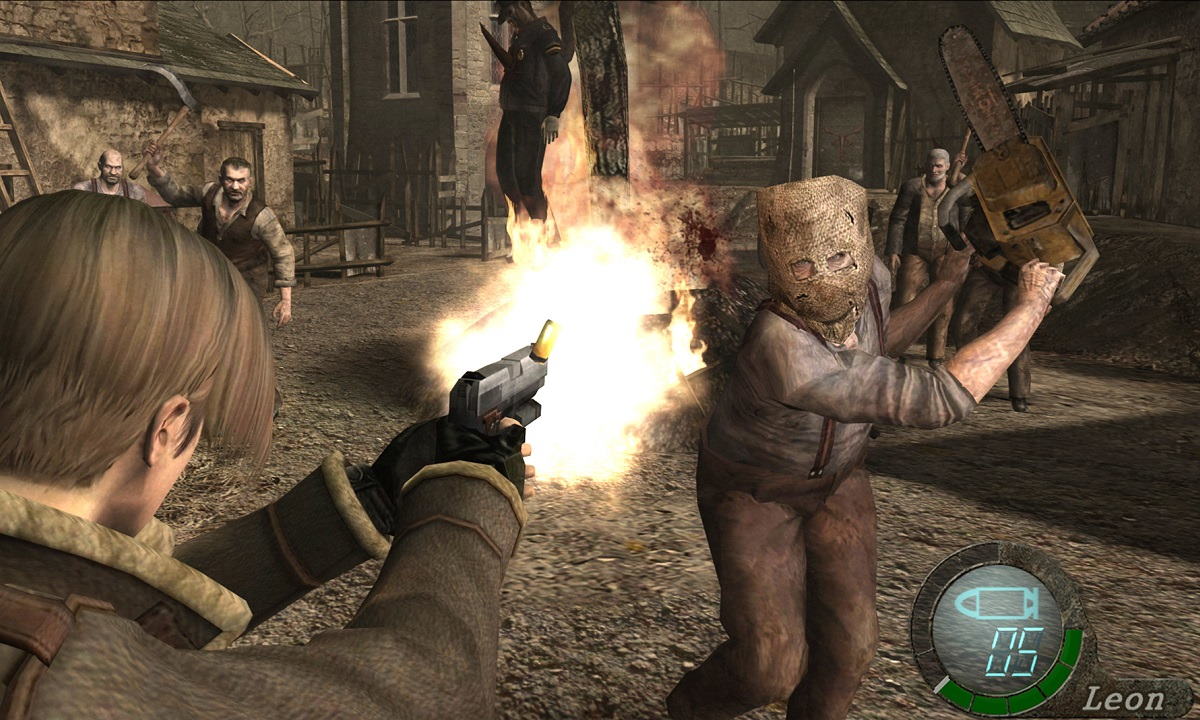
Resident Evil 4 (Capcom, 2005)
RE4 (2005), RE5 (2009), and RE6 (2012)
In this second trilogy, the survival horror approach changed so drastically that it could even be argued that it disappeared altogether. The incorporation of mechanics typical of shooter games, along with a greater focus on action rather than the gothic horror that characterized previous entries, completely reinvented the franchise. For this reason, the mechanics will not be analyzed in detail as they were in the previous case, since these titles are not considered part of the (classic) survival horror genre and, therefore, a precise study of them is not relevant to this analysis.
With Resident Evil 4, numerous design innovations were introduced that affected gameplay. Regarding aesthetics, the camera change altered the player's perspective, just as the setting became much less inspired by traditional horror. On the other hand, some mechanics were preserved almost intact—such as inventory management and aiming/shooting—but others were modified, such as the removal of the need for ink ribbons to save progress. From a technical standpoint, the number of enemies on screen increased, and the inclusion of melee attacks encouraged the emergence of new gameplay dynamics. Puzzles remained important for story progression but lost prominence compared to visceral action.
The path established by Resident Evil 4 was replicated by Resident Evil 5, albeit with some notable additions worth discussing.
Although the requirement to remain still while aiming and shooting is maintained, the inventory system is changed so that opening it no longer pauses the game's action (RE 5). This forces the player to manage inventory operations as quickly as possible during combat or to use it only when in a safe place where no enemies can attack. This design choice may have been influenced by the need to increase player tension, given that the environments are much larger and the enemies significantly easier to defeat than in previous installments, which means that in Resident Evil 5, there is an almost total absence of the scary atmosphere required in previous games.
The overall dynamic shifts, and despite the presence of a weakened resource management system and puzzles, one key characteristic of the genre remains unfulfilled—the presence of a setting that instills fear in the player.
Finally, Resident Evil 6 further loses its identity as the successor to a franchise rooted in survival horror by simplifying resource management even more. While in Resident Evil 4 and Resident Evil 5, players had to carefully consider not only their ammunition consumption but also their positioning (since they could not aim and move simultaneously) and their inventory (due to limited space), Resident Evil 6 introduces greater mobility by allowing aiming and movement at the same time. This eliminates the need for strategic positioning and enables players to defeat enemies solely through melee attacks without consuming ammunition. Interestingly, the setting chosen for much of the game aligns with the established parameters of survival horror. A terrifying aesthetic is reintroduced—one that had been neglected in the previous two entries.
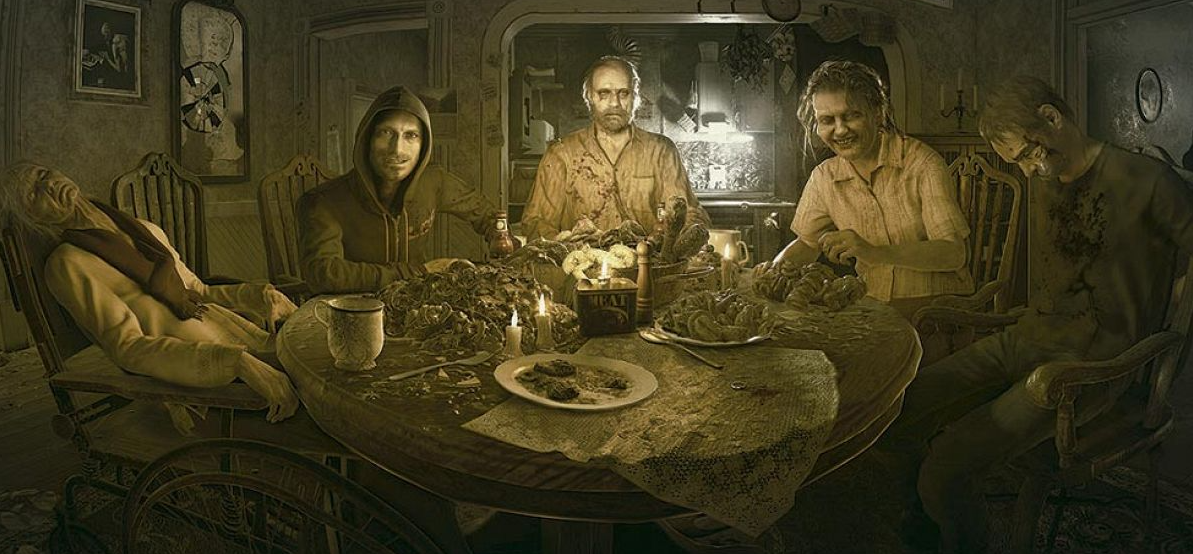
Resident Evil 7 (Capcom, 2017)
Resident Evil 7 (2017)
Following the revival of the survival horror genre by titles like Dead Space and Outlast, the Resident Evil franchise once again changed direction. The renewed interest in classic survival horror led the company to return to its origins. However, the market was already saturated with third-person perspective games, so the decision was made to design the next numbered installment of the franchise in first-person. This choice proved to be a success, as the perspective shift helped differentiate the product from previous games in the eyes of the public.
It is important to note that Resident Evil 7 was not the first first-person title in the series—there were predecessors such as Resident Evil: Survivor (2000) and Resident Evil: Dead Aim (2003). However, these titles ended up as commercial failures, precisely because they leaned more toward the shooter genre rather than survival horror. Additionally, their development struggled during a period when FPS games were booming, leading to significant competition.
Nevertheless, the most significant aspect of Resident Evil 7 is that it genuinely belongs to the survival horror genre. This assertion is supported by the fact that it fulfills the criteria outlined at the beginning of this analysis: the presence of a terrifying atmosphere, the necessity of resource management, and the optional inclusion of puzzles that must be solved to progress in the story. While action is present and intense, the gameplay remains slower-paced to emphasize an oppressive aesthetic.
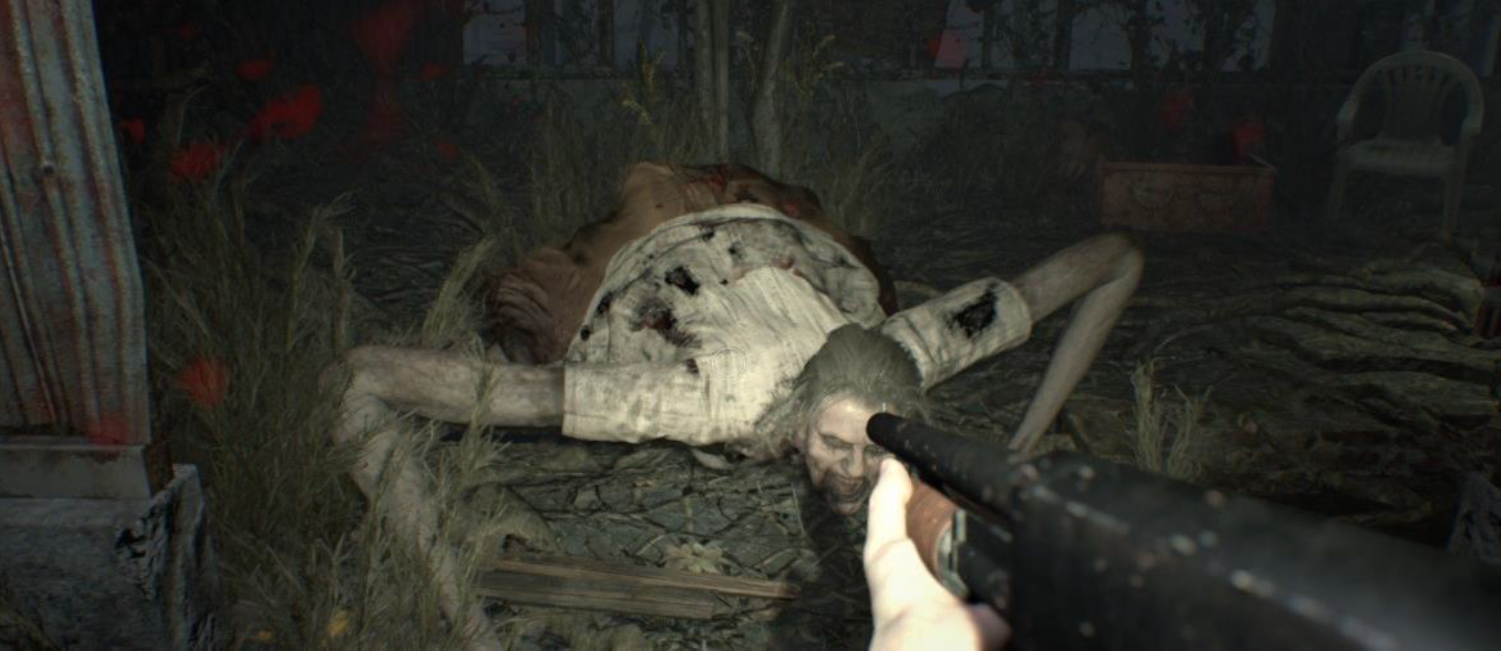
Resident Evil 7 (Capcom, 2017)
Firsts conclusions
Throughout this analysis, an effort has been made to demonstrate the essential characteristics that should define any video game within the survival horror genre. To achieve this, the Resident Evil franchise was selected as a case study, given that its origins as a video game saga are closely tied to the creation of the genre.
As observed in the analysis of the first trilogy, three key elements characterize survival horror. These elements are resource management during gameplay, an atmosphere aligned with horror themes, and, occasionally—since not all survival horror titles incorporate this aspect—the need to solve puzzles to progress in the story.
Titles outside the Resident Evil franchise, such as The Evil Within, Amnesia: The Dark Descent, and Alien: Isolation, perfectly adhere to the criteria outlined in the previous paragraph, establishing a common ground that links them all.

Alien: Isolation (The Creative Assembly, 2014)
Survival Horror Mechanics Design
When designing mechanics for a survival horror game, it is essential to maintain focus on the two (or three) main characteristics that define the genre: promoting intelligent resource management as well as an oppressive and terrifying atmosphere. The addition of complex puzzles is optional but relevant if the goal is to create a more classic and traditional experience.
Using Outlast as a case study, the player is completely defenseless against enemies, who will be chasing them for most of the game. Given the extreme darkness of the environments, the player can use night vision, integrated into the video camera they almost always carry.
Since a survival horror experience requires some form of resource management system, Outlast introduces the battery mechanic. Using the video camera consumes energy, and it must be recharged periodically with new batteries scattered throughout the environments. The inclusion of this simple element completely alters gameplay, forcing the player to avoid overusing night vision.
Regarding the oppressive atmosphere, the setting chosen for Outlast is an abandoned psychiatric hospital. The design incorporates various hiding spots—such as lockers, tables, and stretchers—for players to evade enemies. This, combined with the fact that the player has no weapons for defense, ensures that the second defining condition of the survival horror genre is fulfilled through these mechanics.
Alien: Isolation follows a similar formula. The video game is inspired by the cult film Alien, so most of the story takes place aboard a space station in the middle of nowhere.
In this title, the addition of mechanics that enhance the oppressive atmosphere is particularly significant. As expected, the enemy is an alien life form known as the Xenomorph. The creature is faster, stronger, and more perceptive than the protagonist, so the available mechanics typically allow the player to hide in lockers, drawers, or ventilation ducts. It is a concept similar to Outlast, but much more sophisticated.
The Xenomorph’s AI is highly advanced and can detect the protagonist with ease. For this reason, item crafting mechanics—such as flares or noise generators—were designed to distract it, as the creature cannot be eliminated by any weapon.
However, the strong emphasis on mechanics that reinforce the setting does not mean that resource management mechanics were neglected. For example, crafting mechanics depend on the materials available in the player's inventory, so they have their limitations. Additionally, while the player has a motion tracker to determine the Xenomorph’s location, using it generates noise that the creature can hear. Excessive use of this mechanic will inevitably lead to the Xenomorph locating and killing the player's avatar.
Finally, the presence of door-unlocking or device-activating mechanics that require puzzle-solving further fulfills the third optional characteristic of the survival horror genre.
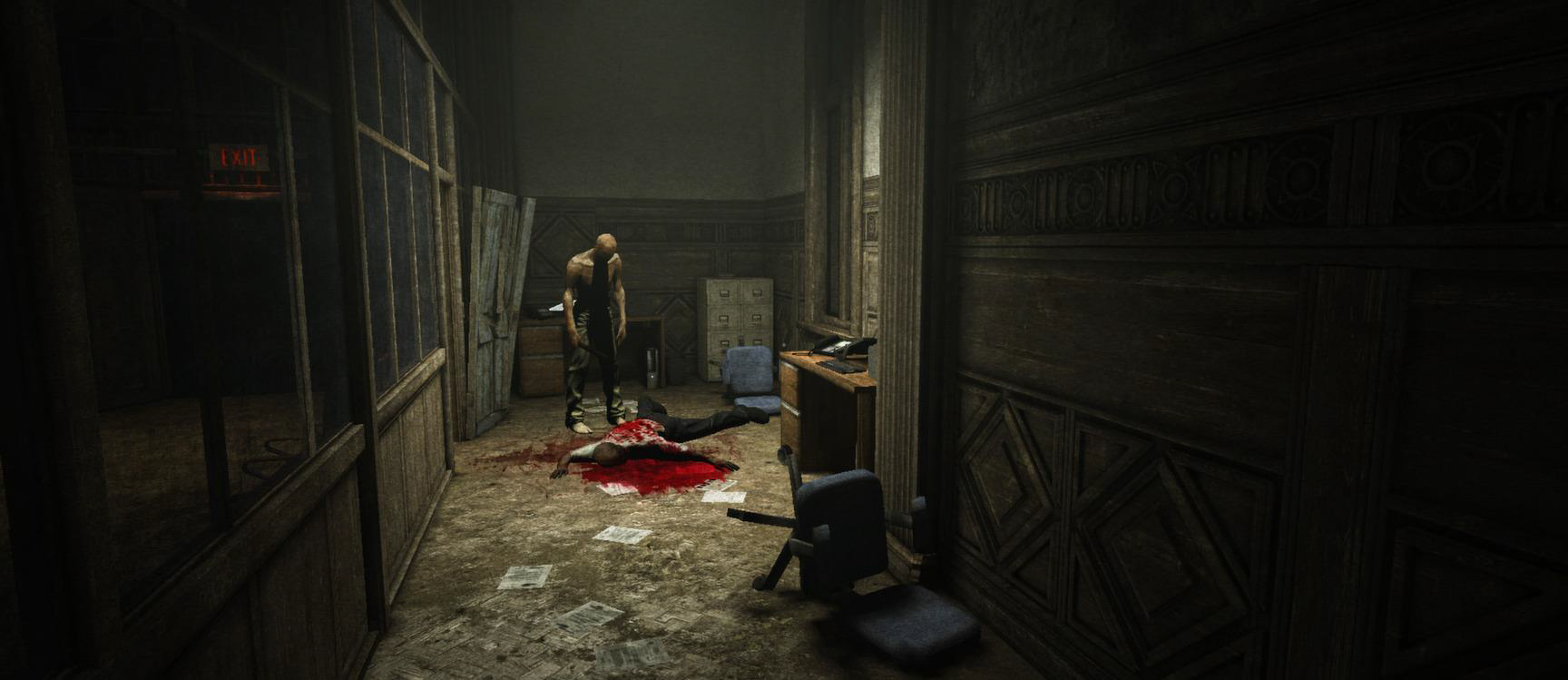
Outlast (Red Barrels, 2013)
Designing Fear
Regardless of the genre it belongs to, every horror video game must rely heavily on aesthetics to create an appropriate atmosphere. This section has been written to provide a series of guidelines for designing environments that instill tension in the player.
According to Maral Tajerian in a Game Developer article titled "Fight or Flight: The Neuroscience of Survival Horror", the primary emotion a survival horror game should evoke in players is fear. However, this emotion is harder to generate than any other, as it requires the designer to have a deep understanding of human psychology.
From a theoretical perspective, it is necessary to distinguish between anxiety and fear. Fear is the human response to an imminent threat, while anxiety is the response to a potential threat that could arise in the future. Many horror games overuse tension, as this emotion heightens the player's sensitivity to potential danger. Similarly, according to the same article, solving puzzles during stressful or dangerous situations increases the fear players experience in those moments. Additionally, it is crucial to properly manage tension fluctuations over time, as sustained tension for extended periods can lead players to become desensitized to fear, much like exposure therapy. Games like Outlast revolve around the experience of facing an enemy against whom there is no possible defense.
Closely related to the previous point, another crucial element when designing a terrifying atmosphere is reinforcing the sense of helplessness. Every living creature experiences fear and anxiety when confronted with an overwhelming situation. The lack of means to overcome specific challenges is what drives many novice players in Amnesia: The Dark Descent to spend long periods hiding inside wardrobes—simply due to the potential fear of being discovered by monsters and brutally killed. In games like Outlast or Alien: Isolation, the feeling of helplessness is further amplified by AI behavior that actively searches lockers or checks under tables, stripping the player of any sense of power or security when hiding nearby.
But what happens if a survival horror game allows players to wield weapons against enemies? The ability to fight back significantly reduces the feeling of helplessness, as the player has means to confront upcoming challenges. This is where ammunition scarcity comes into play (Resident Evil, Silent Hill…), or where enemies evolve to become invulnerable to attacks (Alien: Isolation, where the Xenomorph eventually learns not to flee from fire).
Howard Phillips Lovecraft once said that the oldest and strongest emotion of mankind is fear, and the oldest and strongest kind of fear is fear of the unknown. This principle is particularly vital in horror atmosphere design, as it closely ties to the element of surprise. The greater the uncertainty players feel while playing, the more tension and anxiety they will experience when perceiving subtle atmospheric changes. The sensation that something lurks outside, stalking them, becomes a deeply unsettling and psychologically overwhelming force—especially when the player has no idea what to expect.
Surprise refers to any gameplay element that is initially hidden and may or may not reveal itself before suddenly and unexpectedly appearing in front of the player. It is surprise that makes a horror game scarier the first time it is played than the second—once the element of surprise is exhausted, the range of possibilities shrinks, reducing both the fear and anxiety a player might feel in response to a potential threat. For example, in Alien: Isolation, a player will feel less fear toward the Xenomorph if they are accustomed to dealing with it and have learned most or all of its behavioral patterns. In contrast, a novice player will be terrified, as they do not yet understand what the creature can and cannot do.
Finally, it is important to highlight a specific detail—while it should be considered in the design of any audiovisual product, it is particularly relevant in horror video games. This detail concerns the relationship between the player and their avatar. If the user's empathetic connection to the protagonist they control is strong enough, they will feel genuine concern for the state of their "virtual self," allowing them to experience all artificially designed emotions in gameplay—be it fear, satisfaction, or security—more intensely.
